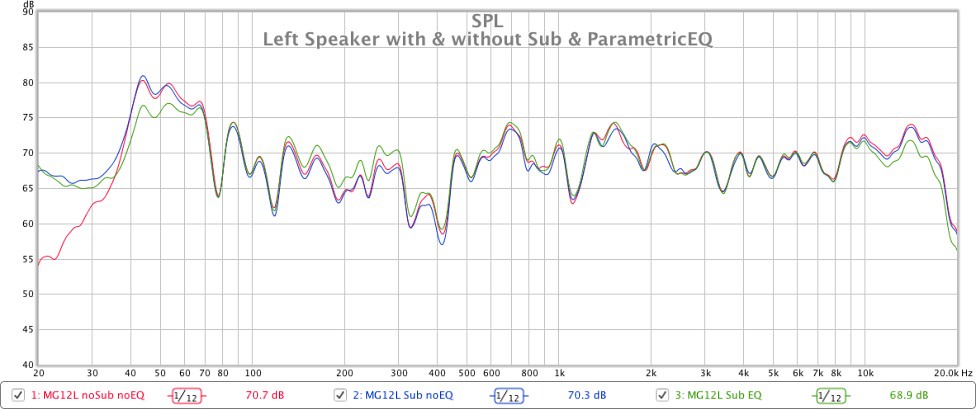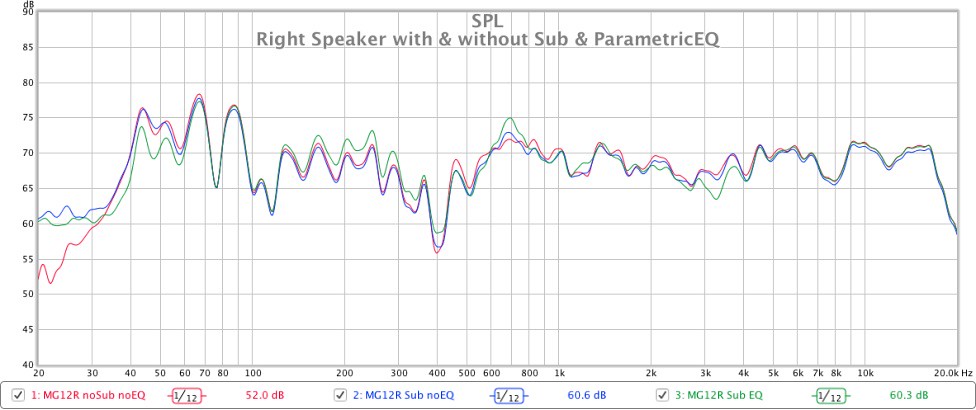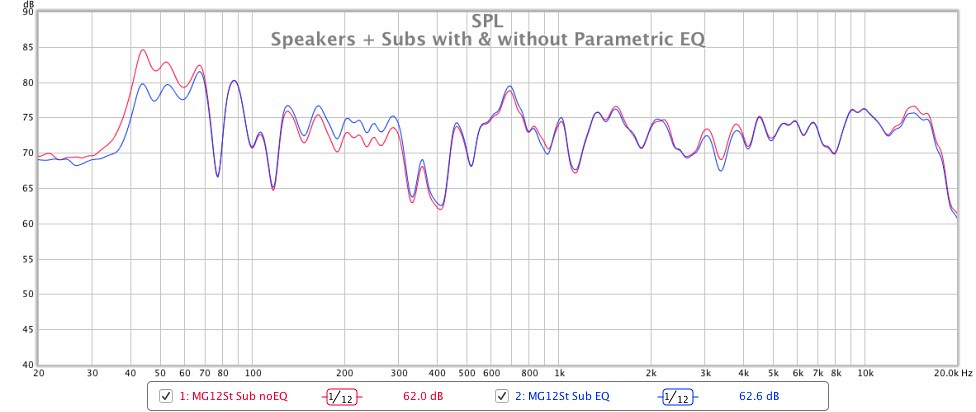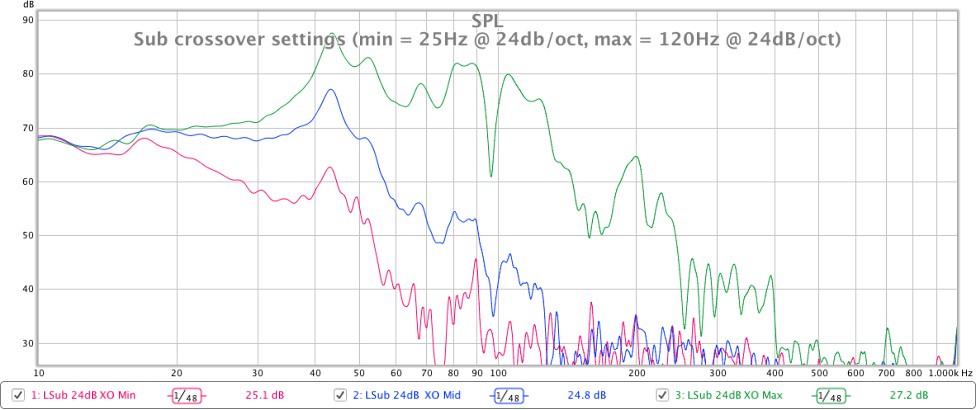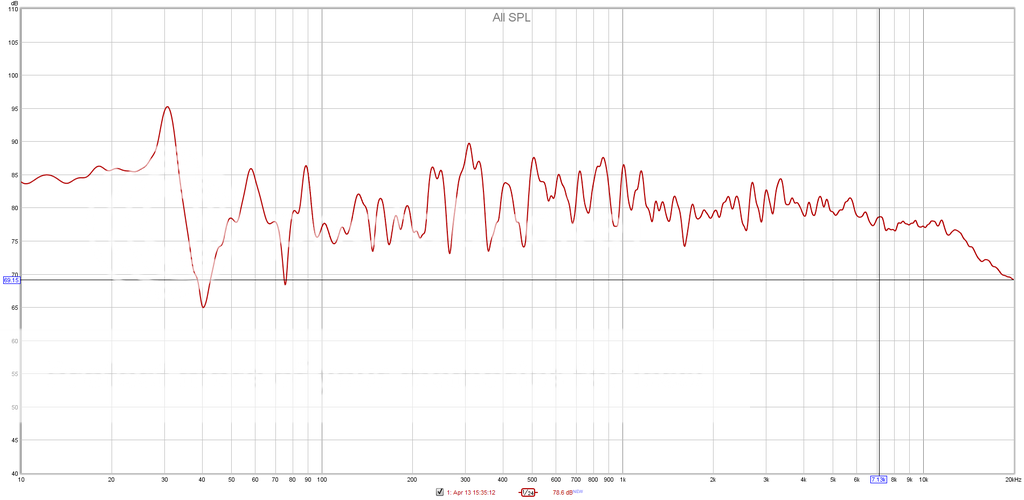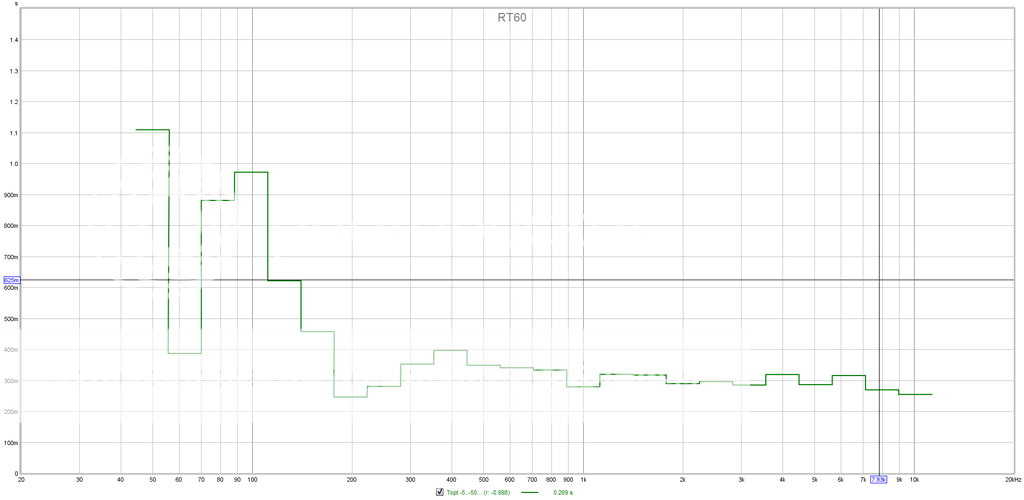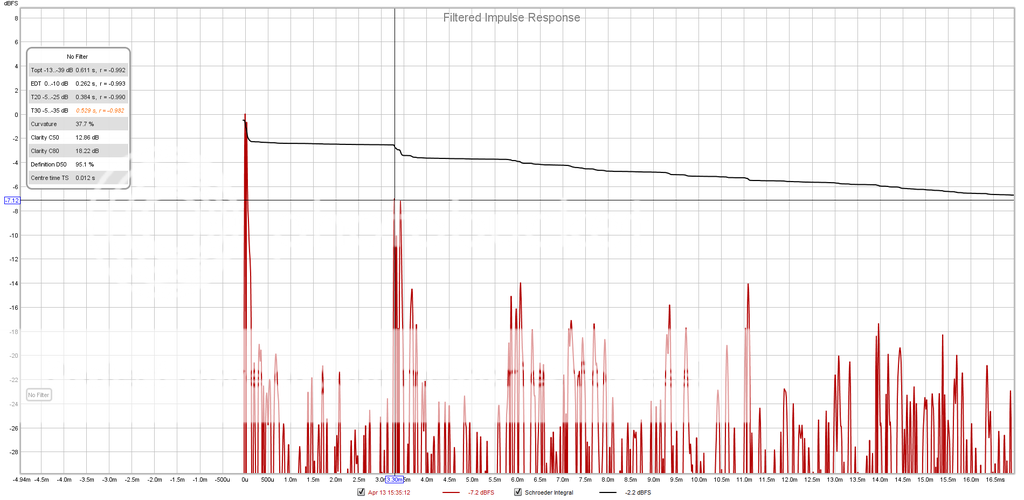I hope I'm not thread-hijacking here if I upload some of my own graphs instead of starting yet another thread on room measurement / sub integration. Hopefully this will not only help me but also others pursuing a similar endeavour.
This is how my speakers measure from my listening position (not my exact listening position but 25cm lower as I did not want to disturb the height of the microphone which is currently set precisely at tweeter height).
Note: Ignore the big dip around 300Hz-450Hz, this disappears when the mic is raised to my correct listening height.
Comments are welcomed on my sub-70Hz EQ'd frequency response and how its balance is compared to the rest of the spectrum (it sounds just about right to my ears but I'm willing to experiment if you think it can be improved upon!).
First off this is the REW Simulation of my room with mains and subs running. I've inputted all data as accurately as possible, except for the subs' XO frequency (this should be 25Hz but the lowest the Simulation can model is 40Hz. My room is 4.2m x 3.8m x 3.25m and is on the first floor of a Victorian house with suspended wooden floors.
Below are my actual measurements.
Graph 1: Red = left speaker with no sub and no parametric EQ, Blue = left speaker with left sub and no parametric EQ, Green = left speaker with left sub plus parametric EQ.
Graph 2: Red = right speaker with no sub and no parametric EQ, Blue = right speaker with right sub and no parametric EQ, Green = right speaker with right sub plus parametric EQ.
Graph 3: Red = Stereo speakers with stereo subs and no parametric EQ, Blue = Stereo speakers with stereo subs plus parametric EQ.
Graph 4: Red = Min sub XO setting (25Hz @ 24dB/oct), Green = Max sub XO setting (120Hz @ 24dB/oct), Blue = Mid XO setting (??? Hz @ 24dB/oct).
As I run my main speakers full range with no high-pass filter, I have set the subs to the lowest XO setting possible (25Hz @ 24dB/oct). This minimises the overlap, minimises the additional excitement of my 43Hz room mode, and therefore minimises the amount of parametric EQ I need to apply to balance the overall system response (the parametric EQ is system wide so affects both the subs and the mains).
I wonder if I need to set my BK XXLS400 subs louder to raise the level from 20Hz to 40Hz? I'm still fairly new to subs so don't know how much they can be 'cranked' before bottoming out (on a scale of 7 o'clock being minimum gain and 5 o'clock being maximum gain, I've currently got them set to 2 o'clock). With respect to the above graph showing the effect of the different crossover points, perhaps a better solution is to raise the subs' XO frequency and then apply a deeper notch filter on the parametric EQ at 43Hz?



